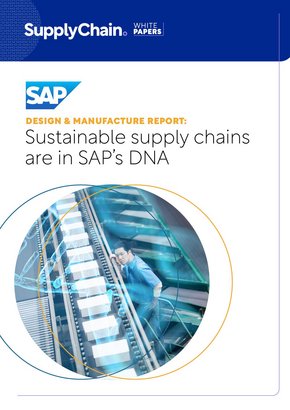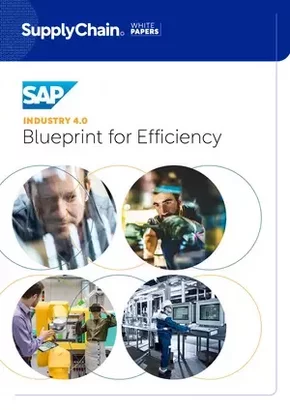Acting as the backbone of any Industry 4.0 organisation is the Intelligent Asset. Gathering and analysing data from connected equipment and machinery gives employees greater control over how to increase efficiency, remove unplanned downtime, and reduce overheads by eliminating the need for unnecessary maintenance.
Intelligent Assets is one of the four pillars of SAP’s Industry 4.0 initiative, alongside Intelligent Factories, Intelligent Products and Empowered People. Rachel Romanoski, Solutions Manager, Digital Assets, SAP, says: “Intelligent Assets allow businesses to ensure that they have a resilient supply chain, by making sure that the products are where they need to be when they need to be there, regardless of who the end consumer, user, operator, or service provider might be.”
Here she explains what an Intelligent Asset is and how it can influence all facets of an organisation’s operation, from design and manufacturing, to delivery.
The building blocks of intelligent business
[stand] Rachel Romanoski, Solutions Manager, Digital Assets, SAP, shares insight on the fundamentals of Intelligent Assets, and how to mitigate risk, downtime and supply chain volatility
A business’ most valuable assets are those that go relatively unnoticed day to day. When a machine on a shop floor is fully lubricated, running at optimum temperature and pumping out its required units per hour, it requires no intervention or conscious thought. The same can be said for the employee that has all the necessary information at their fingertips to complete their tasks and dedicate their time to improvements.
The harsh reality is often more complicated. Machines break down, they must undergo routine maintenance and they can quickly become a disruption to productivity and a costly hit to an organisation’s bottom line. Through the power of Industry 4.0, Intelligent Assets promises to change that.
“You can do a lot with just a little intelligence,” Rachel Romanoski, Solutions Manager, Digital Assets, SAP says. “Oftentimes people think Intelligent Assets need to be the latest and greatest cutting-edge technology. They can be super advanced, such as leveraging physics-based engineering simulations to forecast potential failures, and help mitigate them. But it could be as simple as a temperature reading. You can pull a lot of simple information from most equipment, and by enhancing that data through ancillary solutions and digital capabilities, you can create that Intelligent Asset.”
Cutting the cost of poor asset management
Intelligent Assets provide two fundamental benefits for business, Romanoski explains. "First and foremost, Intelligent Assets can help mitigate and eliminate unplanned downtime - those catastrophic events that can have major impacts on your supply chain and cost in general.”
Allowing companies to take a more proactive approach to routine maintenance and critical repair instantly improves risk mitigation. Traditional asset management is an inexact science, at best, often informed by OEM recommendations, time-based best practices or, in some instances, the heuristic gut instinct of individual engineers and operators.
Take the equipment used in an oil field. In this high pressure, technical environment, traditional asset management would usually dictate that maintenance on a centrifugal pump is informed by time-based metrics. Blanket assumptions such as these, however, do not account for a wide variety of variables such as uptime or operating conditions.
“With a simple vibration sensor integrated into that pump, operators are able to change the way they look at maintenance, pull information and data, plot trends and analyse that accordingly,” Romanoski says. “The result is a more dynamic and prescriptive understanding of exactly when a pump needs lubricating, for example. The true power of the Intelligent Asset is in changing the basic, reactive emergency work or time-based, planned maintenance and being more prescriptive and tailored to that specific asset and use case. Ultimately, you can reduce the unplanned events that often carry a big price tag.”
Intelligent Assets can also alleviate cost leakage. Unnecessary maintenance not only means machines are unproductive and idle when they could be serving customers, it carries hidden costs in the form of labour and the use of expensive spare parts.
“Intelligent Assets allow you to be more lean in using materials for repairs or maintenance,” Romanoski says. “Because you have a full understanding of what will be needed and when, you’re able to significantly reduce overhead costs. If we further look at the costs from an overhead perspective, Intelligent Assets also allow businesses to better sweat their assets. Maybe you can consider the lifecycle of the asset and understand whether you can push it a little bit further.”
Empowering people for resilient supply chains
The second major opportunity Intelligent Assets provide is in empowering employees to build more resilient and more efficient supply chains. A more informed worker is, after all, a more productive worker.
“Not every asset is going to be applying this more prescriptive maintenance strategy,” Romanoski says. "It might be that the best course of action for a low cost item is to run it to failure. Having this information that we collect over time empowers those people to make those better decisions, but also has a trickle down effect to building resiliency and efficiency into the entire supply chain.”
At SAP, Intelligent Assets represents the “through line” that connects the four pillars of its Industry 4.0 approach. The company has a rich heritage in plant maintenance and operation solutions, with decades of data, best practice and market stewardship to draw from.
“If we consider Intelligent Products, being able to leverage the information that we get from the assets themselves can actually have an impact on things like quality in that particular product that's being manufactured or produced,” Romanoski says. “This allows organisations to start to correlate trends based on how a machine might be performing to what's the actual appropriate yield you might be getting out of that product, for example.
“Intelligent Assets are the building blocks of the Intelligent Factory and Industry 4.0, and then ultimately, with Empowered People, it’s about bringing the people, the assets, the processes all together to really drive a resilient supply chain, no matter which of the pillars you’re looking to implement from Industry 4.0”
- The Art of Supply Chain Planning with Gartner, SAP, KinaxisSupply Chain Risk Management
- Why SAP Supply Chain Solutions Could Transform ManufacturingTechnology
- Why Ericsson Chose SAP to Enhance Supply Chain EfficienciesTechnology
- SAP’s Mike Wade on the Pace of Digital Supply Chain ChangeDigital Supply Chain




